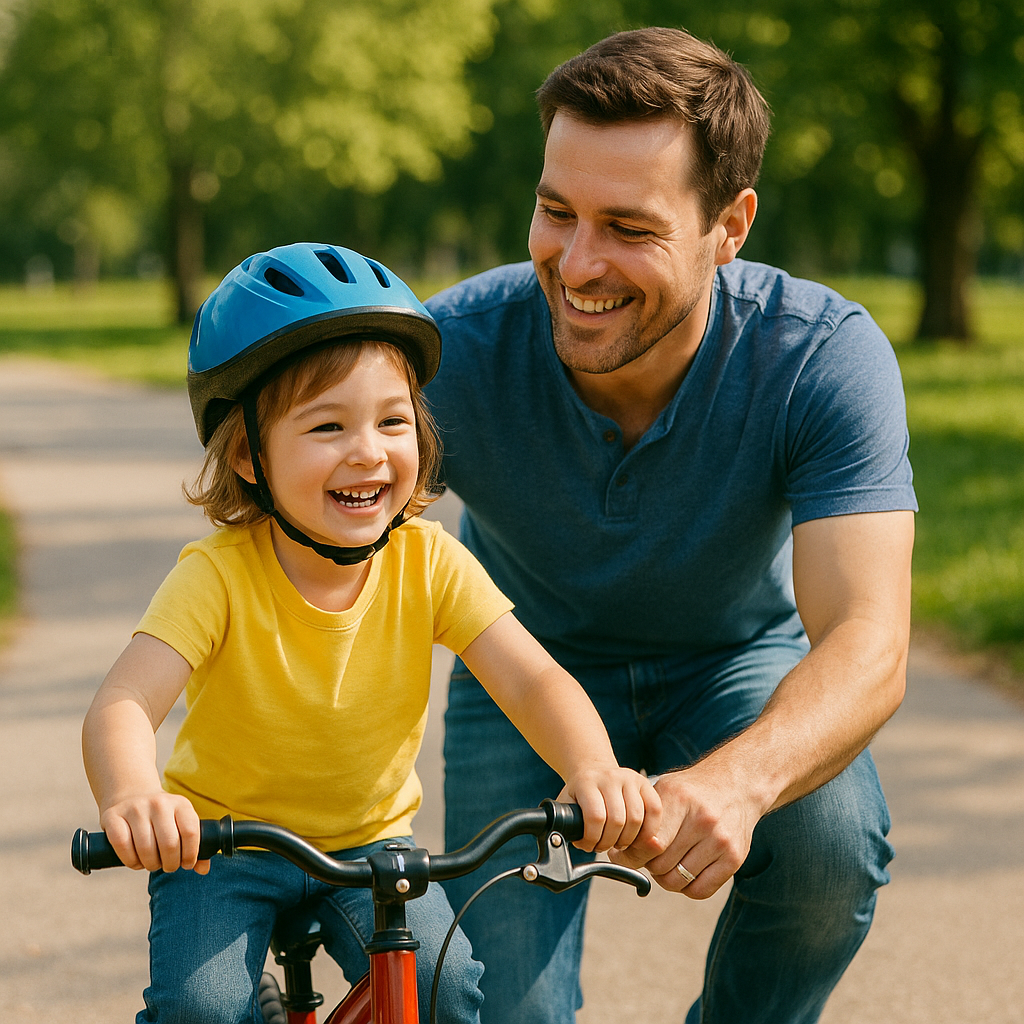
Pedaling Together: How Riding a Bike with Dad Impacts Child Development
Share
Few childhood memories are as formative and joyful as learning to ride a bike—with a parent close by. Especially when riding with a father, children benefit not just from physical exercise but also from strengthened emotional bonds, improved confidence, and valuable cognitive development. Backed by scientific literature, this blog explores the many benefits of cycling with dad.
🚲 1. Builds a Strong Emotional Connection
Quality time spent cycling together contributes significantly to father-child bonding.
-
A study by Lamb and Lewis (2010) in Fathering: A Journal of Theory, Research, and Practice about Men as Fathers emphasized that shared physical activities—like biking—enhance emotional closeness, foster communication, and build trust between fathers and children.
-
Similarly, research by Dubowitz et al. (2001) found that paternal involvement in leisure activities positively correlates with a child’s emotional security and resilience.
💪 2. Promotes Physical Health and Motor Skills
Biking develops balance, core strength, and cardiovascular health.
-
According to the American Academy of Pediatrics (AAP), cycling improves gross motor coordination and body awareness, especially in young children aged 3 to 8.
-
A 2018 study in Pediatric Exercise Science showed that children who bike regularly exhibit better postural control, leg strength, and coordination, contributing to reduced risk of obesity and developmental delays.
🧠 3. Enhances Cognitive and Executive Function
Outdoor biking isn’t just exercise—it’s a brain workout.
-
In a randomized trial published in Frontiers in Psychology (2020), kids who participated in supervised cycling sessions had improved attention spans, impulse control, and memory recall, all components of executive functioning.
-
When guided by a parent, children learn to navigate routes, respond to instructions, and follow traffic cues—developing situational awareness and spatial intelligence.
😊 4. Builds Confidence and Independence
Learning to ride with dad nearby creates a safe space to take risks.
-
A 2017 study in Child Development showed that children who were allowed to challenge themselves physically (like biking on varied terrains) had higher self-esteem and lower anxiety levels compared to their sedentary peers.
-
Fathers often serve as encouraging yet playful role models, offering just enough guidance to build a child’s courage without micromanaging.
👨👧 5. Models Healthy Habits and Social Behavior
When fathers model regular exercise and outdoor routines, children are more likely to adopt those behaviors themselves.
-
A Journal of Physical Activity & Health (2016) analysis found that paternal physical activity was a strong predictor of children’s own activity levels, particularly when done together as a routine.
-
Group rides with other families also teach teamwork, turn-taking, and traffic etiquette, reinforcing prosocial behavior in real-life settings.
✅ Summary of Benefits
| Area | Impact |
|---|---|
| 🛡️ Emotional | Strengthens bonds and trust |
| 🏃 Physical | Enhances motor skills and fitness |
| 🧠 Cognitive | Boosts attention and memory |
| 🌟 Confidence | Encourages independence and risk-taking |
| 🤝 Social | Promotes positive habits and teamwork |
👪 Tips for a Meaningful Ride
-
Choose safe, scenic routes (parks, trails, or wide sidewalks).
-
Start with tandem or balance bikes for younger kids.
-
Celebrate small achievements—first hill, longer distance, etc.
-
Let your child lead the way occasionally to build autonomy.
